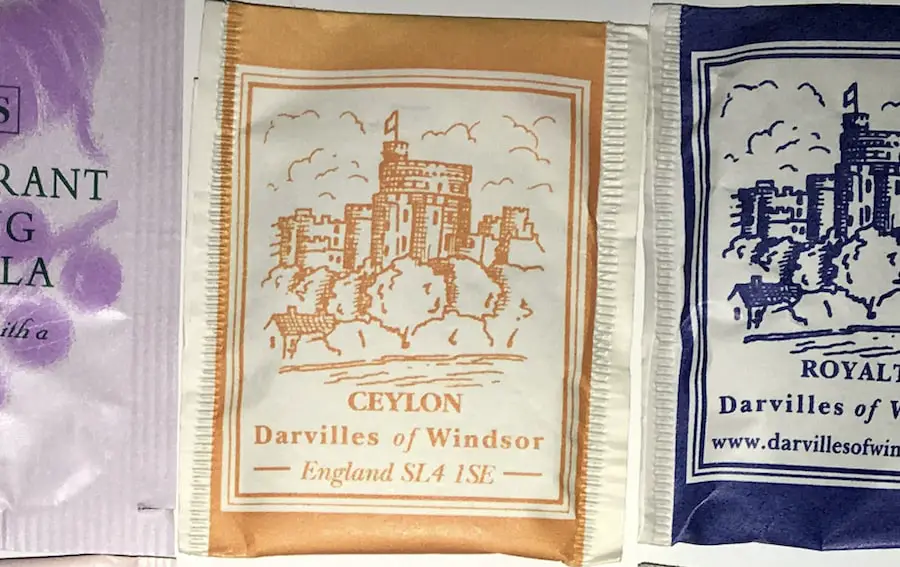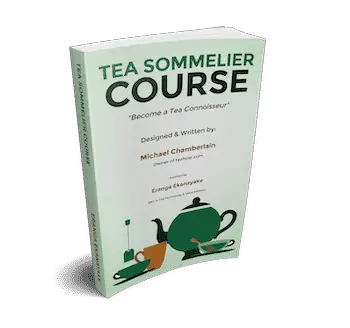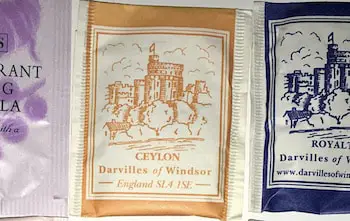When it comes to caffeine, many of us like to watch our caffeine levels. But what about Ceylon tea caffeine levels?
Ceylon tea actually comes in a number of varieties. So, in this article, I’m going through in detail what the caffeine level is, in each variety, starting with a summary…
On average, Ceylon black tea contains 50mg of caffeine per cup, with variations of Ceylon being higher or lower. Whereas other types of black tea average 47mg of caffeine per cup. Ceylon covers a variety of teas that vary in caffeine levels. Green is 35mg, White is 6mg and Oolong varies further.
Ceylon tea contains caffeine because it is derived from the tea plant “Camellia Sinensis”. The caffeine content in different types of Ceylon teas per cup is as follows:
Ceylon Tea Caffeine Level
So here’s that summary list regarding caffeine in different types of Ceylon tea.
- Black tea – 50mg
- Green tea – 35mg
- White tea – 6mg
- Oolong tea- varies
These amounts are largely in line with the general black, white, and green teas available on the market.
Does Ceylon tea have caffeine?
To begin with, Ceylon tea does contain caffeine just like any other type of true tea. Specifying this caffeine content in numbers requires a little background knowledge.
Most of us assume Ceylon tea to be the classic black world-renowned Ceylon tea. But in truth, Ceylon tea is available as green tea, white tea, black, and even oolong teas.
All these varieties of Ceylon tea contain some level of caffeine, as they are made from the true tea plant “Camellia Sinensis”.
This in turn hopefully clears up any other confusion that Ceylon tea is somehow cultivated from a different source other than the standard tea plant.
Unlike other teas named after the leaves they are made from, Ceylon tea is named after the country it’s grown in.
Ceylon, now known as “Sri Lanka” is one of the finest tea producers in the world. They rank highly in the top 62 tea-producing countries.
Besides, there are also specific properties that make Ceylon tea different from tea produced in other countries and regions in the world. This includes a slightly different caffeine profile too …when compared with other tea varieties.

Caffeine in each variety of Ceylon tea
Below is a breakdown of how much caffeine there is in Ceylon tea, based on the type of tea.
Ceylon black tea caffeine
Ceylon black in general has a higher caffeine profile than other varieties.
In fact, black tea in general, regardless of where it’s produced, has the highest caffeine profile, when compared to other types of tea.
Ceylon black tea on average has 50mg of caffeine per cup. Whereas other types of black tea have around 47mg of caffeine per cup.
So in truth, there isn’t much of a difference between Ceylon black tea and other black tea varieties.
Ceylon green tea caffeine
Ceylon green tea has a modest caffeine profile.
On average this is about 35 mg of caffeine per cup of Ceylon green tea. Most other green tea varieties have an average of 30 mg of caffeine per cup.
While this is only an “average indication” of Ceylon green tea and the general ones, this can be more for other green tea varieties – based on some specific factors, including quality level.
Ceylon white tea caffeine
Ceylon white tea has the least when compared to other types of Ceylon tea. Again, regardless of it being from Ceylon, white teas, in general, have a lower caffeine profile.
On average Ceylon, white tea has 6 mg of caffeine.
Even other White tea varieties sold around the world have the same amount of caffeine closer to 6mg. Like the green tea option, this does vary depending on many factors like the level of quality.
Ceylon Oolong tea
Ceylon oolong tea is another specialty among Ceylon tea varieties.
Oolong is a partially or semi-oxidized tea that is produced using cultivars intended for both black and green tea.
Regardless of Ceylon oolong tea, oolong, in general, is a tea that occupies a broad spectrum of tastes and profiles between green and black tea.
So as with any Oolong from around the world, Ceylon oolong tea caffeine can vary quite dramatically.
This all comes down to the proportion of oxidization, which varies anywhere between 8%-80%. The lesser the oxidization the lesser caffeine there will be in your tea.
Low caffeine options for Ceylon tea
Ceylon teas such as English breakfast or afternoon tea, Darjeeling tea and Ceylon supreme tend to have a medium caffeine profile.
So if you’re conscious about the caffeine profile of Ceylon tea, these can be a low-medium option.
You can consume these all day without really coming to any harm.
As you can see, when considering the average caffeine content of Ceylon black, green or white tea, it doesn’t exhibit much of a difference.
Caffeine free Ceylon tea
There is of course one way to make Ceylon tea completely caffeine free. Well almost caffeine free. that is to drink Caffeine free tea instead.
You can of course purchase really nice Ceylon without caffeine from amazon at a reasonable price. Just keep in mind that caffeine-free is always totally free. Processing strips the caffeine out of the tea but there are likely to still be trace caffeine compounds in the tea.
Taking out the caffeine reaquires a lot more processing, and this is often reflected in the price. But it’s a good option for those of us who love tea but are caffeine sensitive.
However, as we mentioned, unlike other varieties, Ceylon tea also has some special properties that can vary the caffeine profile further. So let’s take a look at those next…
Factors that affect the caffeine content of Ceylon Tea
Ceylon is a country blessed with the perfect land for tea cultivation. It has rich soil and near-perfect weather for tea cultivation. This makes Ceylon tea stand out among other teas around the world.
So below are specific factors that can affect the average caffeine content of Ceylon.
Tea varietals
Ceylon tea is cultivated in different parts of Sri Lanka.
Even though the country is relatively small by most standards, each area of it can still boast its own soil and weather conditions individually affect the cultivation of Ceylon teas.
This also means that the quality of the tea – including the caffeine content – will vary accordingly.
Here are some of the more famous parts of Sri Lanka where tea is produced…
- Kandy
- Nuwara Eliya
- Uda Pussellawa
- Uva Province
- Dimbula
- Sabaragamuwa Province
- Ruhun
Ceylon teas produced in each of these places each have a different flavor, aroma, and caffeine profile.
Here’s a good Ceylon tea loose leaf pack to get into Ceylon tea, available on Amazon.
Methods of processing
Below are the steps involved in the processing, and how they affect the caffeine content of Ceylon tea …and all teas in general.
Withering – The more effective the withering is, the more caffeine content in the leaf.
Rolling – Teas that are rolled or twisted more will release caffeine more slowly than flat tea leaves. This also means teabags can release caffeine quicker than leaves because they are in a fine form.
Fermentation – Fully fermented …or teas that experience longer fermentation will have more caffeine than those that don’t.
Oxidization/drying – Fully oxidized teas that appear in dark colors are believed to make your tea higher in caffeine.
This is not because of the tea’s properties. The lesser the oxidization, the less time it takes in the hot water to release flavor, color, and taste altogether. This will call for shorter steeping times, which in turn will release less caffeine and vice versa.
Sorting – This is the part where the tea grades are formed and sorting is where teas are divided based on the size and then graded. Sorting generally results in tea grades such as leaf tea, broken tea, fannings, and dust. Broken tea, fannings, and dust tend to have more caffeine.
This is because broken tea leaves or fine tea leaves can release more caffeine sooner into hot water than whole leaves – simply because they have a greater surface area.
I talk more about these methods of processing in my Tea Sommelier course. If you’re looking to learn more about tea then my fast course to becoming a tea connoisseur is perfect for you. Here are some further details before we move on to more details about Ceylon caffeine.

Take the fast track and become a tea connoisseur
Whether for enjoyment or considering a career as a tea sommelier. This course has everything you need to enhance your tea knowledge and tea-tasting skills.
This course keeps it simple with step-by-step tea tasting and easy reference guides
For pleasure, or as a precursor to a career in the tea industry. Find out what tea sommelier actually does, their career paths, and what they earn.

Find out more about the Teahow Tea Sommelier Course!
Find out more about the Teahow Tea Sommelier Course!
Parts of the tea plant that Ceylon tea is made from
The “Camellia Sinensis” variety that is grown in Sri Lanka has caffeine levels varying from 2.5% to 4%.
The distribution of caffeine from this plant depends on what part of the plant is used for making the tea.
Below is a breakdown of the parts of the “Camellia Sinensis” variety in Sri Lanka and the percentage of caffeine for each part.
- Bud 4.7 %
- First leaf 4.2 %
- Second Leaf 3.5 %
- Third Leaf 2.9 %
- Upper stem 2.5 %
- Lower stem 1.4 %
These are ways more specific to how the caffeine in Ceylon tea differs based on different factors like the brewing method…
Brewing methods affect caffeine levels
Even the brewing methods make a difference in the caffeine content of Ceylon tea.
Generally, longer steeping, adding greater amounts of tea leaves, using tea bags, or any other form of broken or fine tea powder can increase the caffeine content further.
These brewing choices apply to and increase the levels in every other tea, not just Ceylon.
To finish…
I hope this has helped you to understand more about Ceylon tea caffeine levels. I have a series of articles based on the caffeine content in various types of teas. I’ve added a list of them below. And don’t forget to check out my Tea Sommelier Course.
